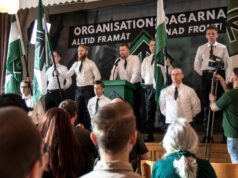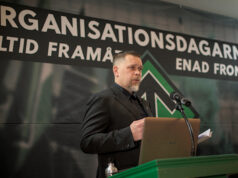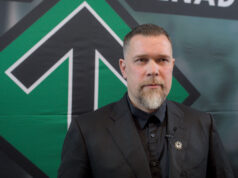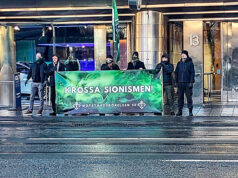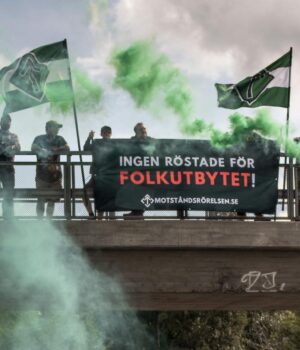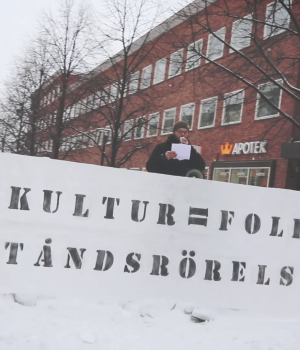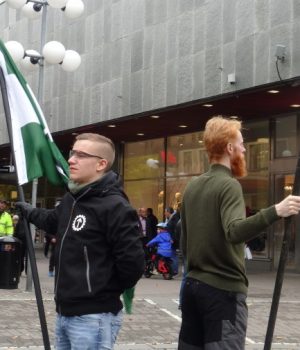IDEOLOGY. Fredrik Vejdeland writes about two factors necessary for achieving victory in the long run.
A revolutionary movement doesn’t get anything for free: no state support, no glowing reports from the mass media, no economic assistance from influential people in society. History shows that this only happens to revolutionary movements after the movement has proved its true colours and has shown itself to be a force worth backing, or has become a feared enemy to which concessions must be made. But the road to our final destination is long and winding, and when you’ve reached it, it’s possible that you might not need, nor want, any ”help”.
Despite our current state (i.e., a vitally important struggle organization, but one without societal power), it’s obvious that the power-holders regard the Nordic Resistance Movement as a serious potential threat to their future. There is a famous saying that goes: To find out who rules over you, find out who you’re not allowed to criticize. By a similar method, you can find out who’s a threat to their power by finding out who the power-holders regard as a threat to be combatted. In the Sweden of today, the Nordic Resistance Movement stands firmly in the system’s sights, and they are fighting us with all the force they can muster.
This is because those in power realize, more than others, that when a revolutionary situation is present, the preconditions for the struggle also change. Even in the current situation, in which the economy is still OK and social institutions function, the system has morally bankrupted itself completely. Gang rapes, degrading street robberies, a school and healthcare system in free fall, and so on – all this alienates more and more people from the system.
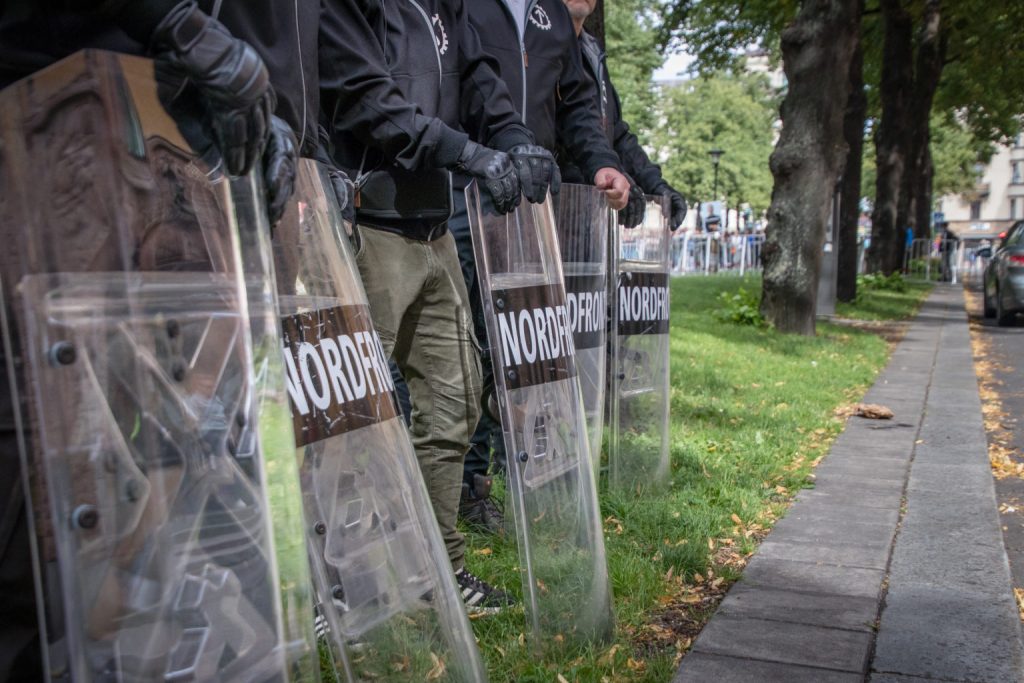
Let’s review the current situation. In Sweden we have special government-financed groups fighting against us judicially in different ways, we have the police twisting laws in order to quell every large popular demonstration, we are being subjected to deplatforming by shutting us out from social media platforms and forbidding us from holding bank accounts (which is an illegal action), members are doxxed and portrayed as criminals just for being members, the system wants to ban us, and a temporary ban has already been imposed on our movement in Finland. Such is the extent of the repression today.
I’ve been in the struggle for so long that I can say that the present strategy of the system is not ”business as usual”. We’ve had much calmer periods before, and their strategy has mostly been to demonise us. It’s obvious that the system is now working in a more coordinated fashion with more sophisticated methods in order to harm the organization. The reason for this change in tactics is because we’ve reached a new point in our evolution in which they now fear we might become a serious threat to the system in the future.
I’m not bringing all this up to brag about our movement or to seek victimhood status; I’m saying it because these are the facts. With facts and correct analyses, we can understand the preconditions for the struggle and how we must act in order to keep the struggle alive so we emerge victorious in the end.
Here I’d like to talk about two things we have to work on in order to succeed in this. One of these may be regarded as irrational and unmotivated – and perhaps even counterproductive by someone with an outside perspective – while the other is more rational.
Sun Tzu wrote that it’s better to kill the enemy’s fighting spirit than its men. Demoralize your enemy, take away what he believes in, make him surrender so that you won’t have to fight a single battle. This is completely true and it’s been tried in many conflicts throughout history. It has also been an effective strategy in completely demoralizing, and later enslaving, almost our entire people.
The Nordic Resistance Movement is strong and resistant because of the worldview we hold. It provides us with convinced, self-sacrificing and fanatical fighters who maintain this fighting spirit even in difficult times. It’s National Socialism that has allowed the Nordic Resistance Movement to survive when we should have imploded during moments of extreme pressure – moments when others have imploded. This conviction has kept this organization together like a binding cement in times when it was temporarily weak and even when the leadership has wavered.
National Socialism is different from other worldviews in that it demands a great deal from the individual and exhorts a life of struggle. Anton Holzner formulated the eternal struggle as a way of challenging oneself and mastering life. The struggle is not an end in itself for National Socialism, but not far from it either. In this way, National Socialism might seem like something irrational, especially if you look at it from an outside perspective. But its practical meaning for an organization waging the struggle cannot be underestimated.
The system has been trying to break down our fighting spirit for a long time, but it has failed. That is why they have now moved into their next phase, which involves trying to outmaneuver us tactically by utilising the dirty methods I listed earlier – methods designed to prevent us from exercising our rights, both as a political movement and as citizens of society. This new strategy shows that we are on the right path. Since the movement has neither surrendered nor been corrupted, they have proceeded to attempt to take away the platforms we use to reach out to the people.
Fighting spirit alone is not enough to handle this strategy. It also demands that tactical considerations be taken by the organization. That is, we will also work rationally.
When we’ve had periods of tranquillity, we’ve generally kept pushing forwards and conducted our struggle in a more predictable manner. There have been periods in which we almost exclusively conducted public actions, week after week – because we could do so. In later years, because of the system’s focus on us, we’ve been forced to adapt ourselves to new conditions and create structures for changing our tactics as the situation requires. Without going into detail, this has led to some groups in the organization remaining centralized while others have become more decentralized; some are open, and some are invisible. In other words, we’re building a more flexible and dynamic organization.
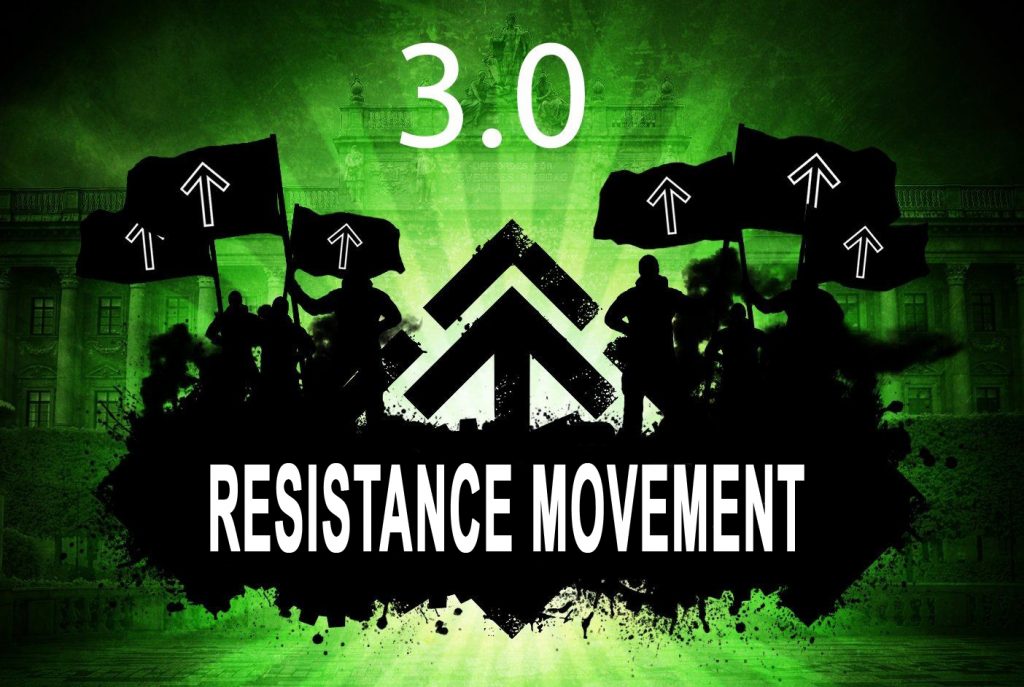
This also changes the way we conduct the struggle on the streets, something I’ve previously written about in the article Resistance Movement 3.0. If the system is momentarily making it difficult for us to organize large demonstrations, we might choose to focus more on town square meetings or flash demonstrations, where we just show up and don’t ask for a permit. We might spend our resources on more relevant and local campaigns and create our own platform out in the real world. More predictable actions might be combined with more spectacular ones. These could be symbolic actions, trolling actions or stunts – actions that can pack just as much of a punch but that sometimes demand more planning, a different way of thinking and, to some extent, different people in our ranks.
By working in this way, you are making it more difficult for the system to build a good strategy in order to work against you, no matter whether you take part in a public action or show up out of nowhere. They don’t know where you’re going to be, what you’re about to do or, in some cases, who’s doing it.
Fanaticism and rationalism
In conjunction with this, I would like to refer to Martin Saxlind’s eminent article Political Soldiers, which also stresses the importance of fanaticism as well as rationalism. Saxlind highlights three archetypical political soldiers, with the Nordic Resistance Movement 3.0 offering a third and relatively untapped archetype, which he describes as specialists (alongside leaders and activists). The specialists enable creative actions, propaganda and the unexpected. In our present stage, they are no less important than the leaders and activists.
To summarize this article, it’s important for the Nordic Resistance Movement to remain a resistant organization, both in order to survive and to advance the struggle. Our worldview makes us morally resistant, allowing us to maintain our fighting spirit so we can stand firm in tough times and advance when we have the wind behind us. At the same time, tactical and rational considerations, in which we become unpredictable as the situation requires, make us organizationally resistant. Both of these elements are decisive for us to emerge victorious in the end.





